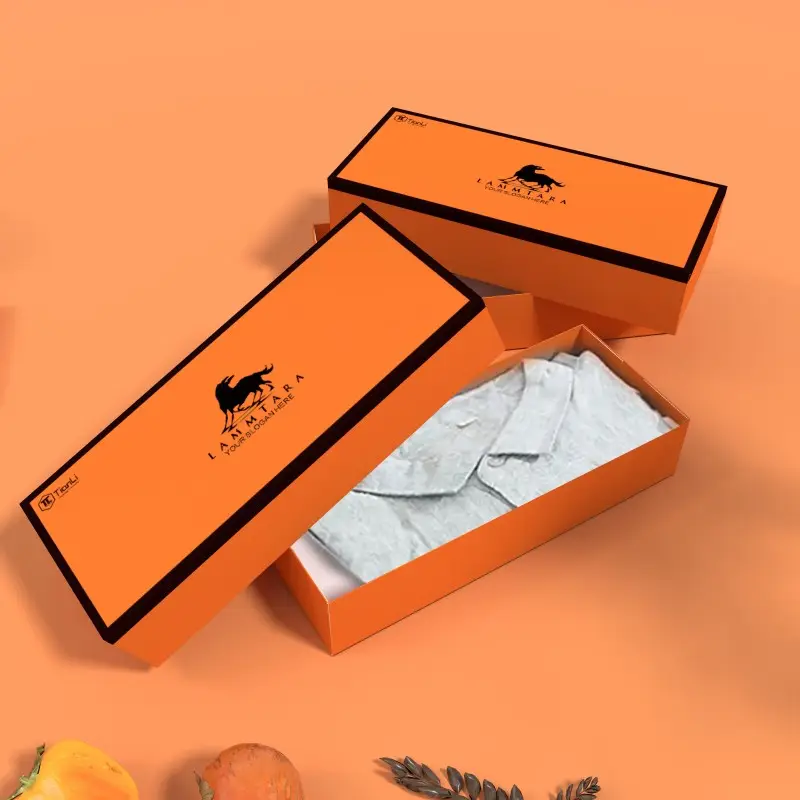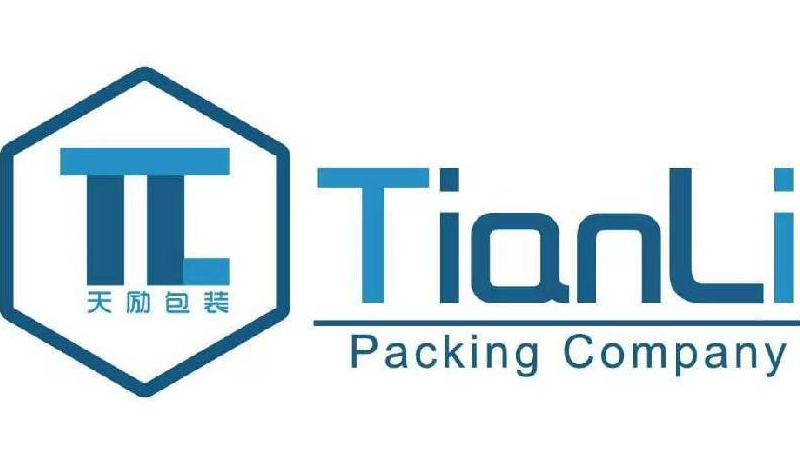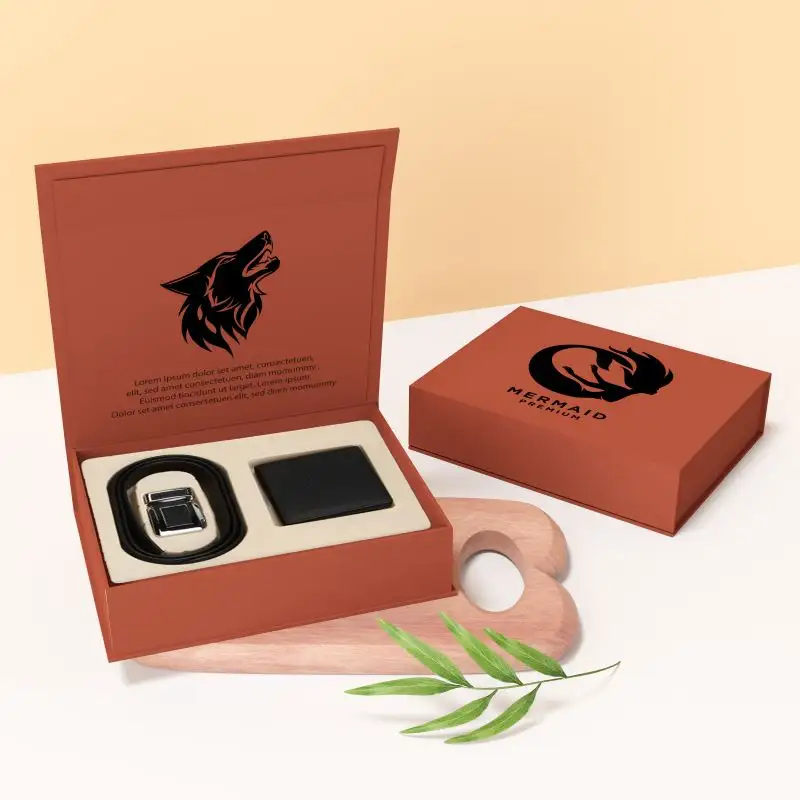Održivi Materijali Revolucioniraju Pakiranje kutije Proizvodnja
Biodegrabilni i reciklirani materijali za ekološke marke
Kako su potrošači postali svjesniji od okoliša, brendovi se okreću biogradljivim i recikliranim materijalima za pakiranje. Poznati materijali u ovom smislu su polilakturna kiselina (PLA) i reciklirani papir koji sve više privlače pažnju u obradi. Nedavne tržišne trendove pokazuju da ovi materijali nude veliku smanjenu opterećenja okoliša i daju značajan doprinos održivom korištenju. Na primjer, mnogi brendovi su prihvatili ove materijale, uspostavljajući bolju ekološku vrijednosnu poziciju te osjećaj lojalnosti prema brendu. Primjeri pričaju uspješne priče tvrtki koje se fokusiraju na zelene rješenja, naglašavajući veću lojalnost kupaca i bolji tržišni položaj. Također, certifikati poput Cradle to Cradle i Green Seal vode eko-prijateljske marke prema korištenju održivih materijala, održavanju okolišnih propisa i promicanju održivosti.
Energetski učinkoviti proizvodni postupci u savremenim objektima
Izdvojivanje energijski-efikasnih tehnologija koje su suvremenim proizvođačima primijenjene predstavlja značajni faktor u ukupnom smanjenju energije i ugljične stopalice. Ove zgrade koriste obnovljive tehnologije i štede puno struje. Na primjer, studije pokazuju da tvrtke koje koriste sekundarne energije u svojem proizvodnom postupku mogu postići smanjenje potrošnje energije do 30%. To se povezalo s certifikacijom Vodstva u energetskoj i okolišnoj projektaciji (LEED) kako bi se proizvođačima pomoglo da budu ekološki smisleniji. Za-energijski-efikasan-LEED-certificiran činilac podržava održivo proizvodnju u cjelini, tako u pogledu proizvodnje kao i u skladu s zaštitom zraka i vode.
FSC-Sertifikirani Papir: Zlatni Standard za Zeleno Pakiranje
FSC je najvažnija certifikacija za osiguravanje odgovorne dobavljanja papira, a stoga je FSC-certificirani papirnati karton zlatni standard za ekološki prijateljsko pakiranje. Ova certifikacija osigurava održivo upravljanje šumama i značajno doprinosi smanjenju izrezivanja šuma uzrokovanim proizvodnjom papira. Kao što su viši nivoji povjerenja potrošača i manji ekološki teret koje nude FSC-certificirani papirnati kartoni, također su važni za lojalnost kupaca. Tržišni zahtjev za ponudama sa FSC certifikatom je znatno porastao tijekom posljednjih deset godina, prateći globalni pomicanje prema održivosti i odgovornom dobavljanju. Ovo proširenje podrijetlije rastući tržišni zahtjev za ekološki prijateljskim alternativama, te da su FSC-certificirani proizvodi dobro postavljeno u redoslijedu za održivo pakiranje.
Inovativne tehnologije štampe za predstavu premium brendova
Digitalna UV štampa vs offset: Postizanje jasnih reprodukcija boja
UV digitalni tisak i offset tisak su dva ključna alata u proizvodnji ambalaže, a svaki od njih ima svoje specifične prednosti. UV digitalni tisak je izvanredan po kvalitetu boja, brzini i ekonomskosti - posebno za kratke serije. To je prilično zanimljiva tehnika koja omogućuje brze promjene i nudi jedinstvenu prednost za prilagođavanje, kao što potvrđuje njen uporabu od strane velikih brendova poput Coca-Cola za personalizirane boca. S druge strane, offset tisak je preferiran kao tehnologija za dugotrajne serije temeljena na visokoj točnosti boja i niskim troškovima. Tiskačka tehnologija se u zadnjih godinama razvila tako da sada uključuje i boje više točnosti te ekološki prihvatljive, s manjim utjecajem, tinte i proizvodne metode. Nadogradnje omogućuju visokokvalitni, točno-bojni tisak koji je ključan za identitet brenda.
Tehnike Embosiranja/Debosiranja za Taktičku Luksuznost
Procesi očaravanja i udubljenja povećavaju taktalni aspekt ambalaže, što potrošačima daje osjećaj da iskusuju luksuzan proizvod. Očaravanje ostavlja dizajn podignut s površine, dok udubljavanje stvara utisnuću uzorku. Tvrtke poput Apple koriste ovaj proces kako bi podigli svoju ambalažu, čime je čine zapamćivom i taktalno bolje osetljivom za potrošača. Tržišne istraživanje nose glas potrošača koji žele uživati u taktalnim osjećajima, pored vizualnog utjecaja, što ukazuje na vrlo trend prema prilagodbi ambalaže izvan samo grafičkog. Ovaj smjer uzrokuje da oznake i brendovi razmatraju očaravanje i udubljavanje, priznavši da tekstura ambalaže ima izravan utjecaj na način na koji je proizvod prezentiran i iskusan od strane potrošača.
Ispis po Pantone-u za konzistentnu brand identitet
Pantone usklađivanje je ključno kako bi se boje brenda održale konzistentnim kroz niz različitih oblika ambalaže, što sve doprinosi prepoznavanju i lojalnosti prema brendu. Ova metoda pruža brendovima način preciznog usklađivanja boja, čime potvrđuju svoj vizualni profil. Uzmimo na primjer Tiffany & Co., koji se oslanja na Pantone usklađeno tisak kako bi zaštitio dobro poznatu "Tiffany Plavu", koja je registrovana kao dio njihove identitete brenda. Najbolje Pantone usklađivanje je kalibracija koja osigurava da se proizvede točno odgovarajuća boja. Ova konzistencija ne samo da jača identitet brenda, već također izgrađuje povjerenje i upoznatost kupaca, bez obzira tko su i gdje su, kroz svaki kontakt s brendom i vrstu ambalaže - apsolutna potrebna stvar u suvremenim taktikama ambalaže.
Implementacija QR koda za poboljšano angažman kupaca
QR kodovi u ambalaži promijenili su način na koji se brendovi povezuju s potrošačima - vrata prema interaktivnom svijetu digitalnog angažmana. QR kodovi su postali ulazak u različit sadržaj, od posebnih ponuda do proširene opisa, što dalje angažira klijente. Podaci pokazuju čuveni porast u postocima angažmana: ambalaže s QR kodovima imaju i do 40% više interakcije u usporedbi s tradiicionalnim pozivom za radnju. Veliki brendovi poput Coca-Coli su već iskoristili QR kodove tijekom pandemije tako što su potrošačima omogućili igranje 'mini-igara' putem pametnih telefona i zadržavanje same veze s brandom.
NFC Omogućene Kuće: Spajanje Fizičkih i Digitalnih Iskustava
Povežite se s svojim potrošačima putem NFC tehnologije ugrađene u ambalazu i istražite integraciju za stvaranje novih iskustava u međusvijetu fizičkog i digitalnog svijeta. Jednim dodirom koristeći kutije omogućene NFC tehnologijom i vašim pametnim telefonom, potvrđuje se autentičnost proizvoda, uživa se u personaliziranom sadržaju, a digitalna iskustva postaju zanimljivija za kupce. Ove pametne inovacije u ambalazu su bile učinkovite i postale korisne, jer postoje neke marke koje su sa njima bili uspješne uz pozitivne odgovore kupaca i čak povećane prodaje. Proizvođači luksuznih satova, na primjer, sada koriste NFC za potvrdu autentičnosti, što dopušta kupcima da osjećaju sigurnost i uživaju u bogatijim povijestima proizvoda, što doprinosi iskustvu kupca.
Rješenja RFID protiv padovanja za visoku vrijednost PROIZVODI
RFID značajno prispeva u potvrdu autentičnosti i praćenje proizvoda visoke vrijednosti, a služi kao jak odbrambeni mehanizam protiv padalina. Sve to se odražava u globalnom tržištu ambalaže, gdje je prihvaćanje RFID-a u ambalažu u rastu, podstaknuto povećanim potrebama za sigurnošću proizvoda, sugeriraju istraživanja. Koristeći ugrađene RFID oznake, brendovi i tvrtke mogu koristiti stvarno-vremensko praćenje kako bi implementirali jača mjera protiv padalina, s ciljem zaštititi svoj brend te i sam proizvod. RFID se široko koristi kako bi se borio protiv lažnih i padalinskih roba, kao što se vidi u stvarnim primjerima iz luksuzne modne mode industrije koja omogućuje preciznu vidljivost lanca snabdevanja i poboljšava pouzdanost potrošača.
Proizvodnja pogonska automacijom za preciznost i skalabilnost
Robotski sustavi presijecanja za složene dizajne
Tijekom posljednjih nekoliko godina, aplikacije robotskog presjeka materijala fundamentalno su promijenile pakirani landskap, pružajući mogućnost visoke fleksibilnosti dizajna i nepremašivih tolerancija. Ovi računalni sustavi još više poboljšavaju performanse proizvodnje povećavanjem brzine i smanjenjem gubitka materijala. Jedan od glavnih prednosti robotske konstrukcije jest njena sposobnost programiranja složenih oblika koji se ne mogu postići korištenjem konvencionalnih tehnika. Brojke čak ukazuju na povećanje učinkovitosti od 25% u proizvodnji kada se dostignu kontrolirani scenariji s robotskom tehnologijom, što je još jedan valjan argument za prelazak na automatska rješenja. Ovaj skok u preciznoj proizvodnji znači da naše mašine, sigurne za budućnost, proizvode složene dizajne pakiranja brzo i s malim otpadom, što omogućuje još više prilagođavanja i inovacija.
Kontrola kvalitete pogonska umjetnom inteligencijom u visokobrzinskoj proizvodnji
Sustavi za kontrolu kvalitete temeljeni na umjetnoj inteligenciji su revolucionirali visokobrzinske proizvodne linije putem stvarno-vremenskog otkrivanja nedostataka. Provjera temeljena na umjetnoj inteligenciji, nasuprot ručnoj provjeri, povećava točnost proizvodnje artikala i znatno smanjuje troškove koji bi inače bili primijenjeni na tradicionalne mjere osiguranja kvalitete. Na primjer, uvođenje umjetne inteligencije od strane različitih proizvođača rezultiralo je značajnim smanjenjem razine otpada i značajnim povećanjem kvalitete proizvoda. Otkrivši nedostatke odmah na proizvodnoj liniji, sustavi bazirani na umjetnoj inteligenciji pomagaju da se osigura da samo proizvodi najviše kvalitete stignu na tržište, čime se poboljšava pouzdanost brenda i vjeronstvo kupaca.
Upravljanje zalihamima omogućeno IoT-om za pravočasnu dostavu
Danasnji svijet vidi kako su IoT jedinice uspješno povezane s sustavima upravljanja inventarom, čime se pojednostavljuje JIT sistem dostave. Uvođenjem IoT rješenja, tvrtke mogu postići veću točnost inventara i kraće vremena izvedbe uz bolju učinkovitost lanca snabdevanja. IoT je značajno poboljšao performanse dostave, u nekim slučajevima do 30 posto veće točnosti. Ovo rješenje pruža operativnu učinkovitost, alokaciju osoblja i smanjuje troškove održavanjem razina inventara koji odgovaraju lokalnom zahtjevu, što omogućuje optimalnije korištenje resursa i pruža bolju uslugu kupcima.

Mogućnosti prilagođavanja koje mora pružiti svaki dobavljač
Strukturno inženjerstvo za jedinstvene geometrije pakiranja
Analiza konačnih elemenata postaje neophodna za dizajniranje novih geometrija pakiranja koje omogućuju brendovima da se istaknu na konkurentnom tržištu. To je mjesto gdje možete biti kreativni i razvijati revolucionarnu tehnologiju pakiranja koja uključuje potrošača i gradi bolje iskustvo brenda. Primjerice, atipični vanjski oblici ili interakcijske konfiguracije mogu poboljšati vidljivost proizvoda na polici u trgovini. Uz 3D modeliranje i CAD softver, moguće je napraviti precizno i učinkovito strukturno inženjerstvo u razvoju pakiranja koje pretvara apstraktne ideje u stvarna rješenja.
Modularni Dizajnski Sustavi za Sezonske Varijacije
Uključivanje odgovara potrebama sezonskog marketinga s modularnim dizajn sistemom koji se može prilagoditi. Takvi sistemi omogućuju brendovima jednostavno ažuriranje ambalaže u skladu s seizonskim temama/promocijskim indikatorima – što je izuzetno učinkovita taktika za povećanje angažmana potrošača. Odličan primjer je Starbucks, koji stalno koristi modularni dizajn za lansiranje seizonske ambalaže s ciljem povećanja utjecaja na policama i privlačenja potrošača. Studije su pokazale da dobro izvedene varijacije seizonske ambalaže mogu uzrokovati porast stopa kupovine jer ljudi volje kada se dizajni ažuriraju kako bi odražavali trenutnu raspoloženost i sezonske promjene.
Proizvodnja u malim serijama za agilnost na nišnom tržištu
Proizvodnja u malim serijama usko je povezana s dobrošansom reakcijom na nišne tržište. To se često koristi izuzetno učinkovito kod mnogih brendova za lansiranje jedinstvenih proizvoda ili ograničenih izdanja, stvarajući prilagođeno iskustvo kupaca. Uzmimo remeću pivu, koja često koristi model maloserijske proizvodnje za testiranje novih okusa ili posebnih izdanja. Također ovaj pristup omogućuje operativnu fleksibilnost, omogućujući tvrtkama da brzo reaguju na tržišne i potrošačke trendove bez tereta ulaganja u masovnu proizvodnju; što im omogućava da ostaju agilni na konkurentnom tržištu.
Česta pitanja
Koje su primjere održivih materijala koji se koriste u ambalaži?
Održivi materijali u ambalaži uključuju biodegradiabilne opcije poput polilaktinske kiseline (PLA) i recikliranog papira, što pomaže smanjiti ekološki utjecaj i zadovoljiti zahtjeve ekološki svjestranih potrošača.
Kako energijski učinkovite procese proizvodnje koristit ambalažno proizvođenje?
Energetski učinkoviti proizvodni procesi u savremenim proizvodnim objektima integriraju obnovljive izvore energije, pružajući značajne uštede energije i minimizirajući ugljikov otisak, što se podudara s globalnim okolišnjim ciljevima.
Što je FSC certifikacija i zašto je važna za zeleno pakiranje?
FSC certifikacija osigurava održivo dobavljanje papira i odgovorno upravljanje šumama, čime postaje FSC-certificirani papir ključan za smanjenje utjecaja deforestitacije i povećanje povjerenja potrošača u zeleno pakiranje.
Kako digitalne UV i offset tehnologije štampe unaprijeđuju pakiranje?
Digitalna UV štampa nudi izuzetnu kvalitetu boja i prednosti prilagođavanja za kratke serije, dok offset štampa pruža precizno reprodukciju boja za velike količine, oba ključna za proizvodnju jarkog pakiranja.
Zašto se QR kodovi i NFC tehnologija integriraju u pakiranje?
Kodovi QR i NFC tehnologija nude interaktivne platforme koje poboljšavaju angažman potrošača povezivanjem fizičkog pakiranja s digitalnim iskustvima, kao što su informacije o proizvodu i promocijski sadržaj, što povećava interakciju s klijentima.
Kako automatska obrada utječe na proizvodnju pakiranja?
Automatizacija, uključujući robotočko presijecanje i AI-podržano kontroliranje kvalitete, poboljšava preciznost, brzinu i učinkovitost, smanjuje otpad materijala i osigurava visokokvalitetnu proizvodnju u proizvodnji pakiranja.
Sadržaj
- Održivi Materijali Revolucioniraju Pakiranje kutije Proizvodnja
- Inovativne tehnologije štampe za predstavu premium brendova
- Implementacija QR koda za poboljšano angažman kupaca
- Proizvodnja pogonska automacijom za preciznost i skalabilnost
- Mogućnosti prilagođavanja koje mora pružiti svaki dobavljač
- Česta pitanja

